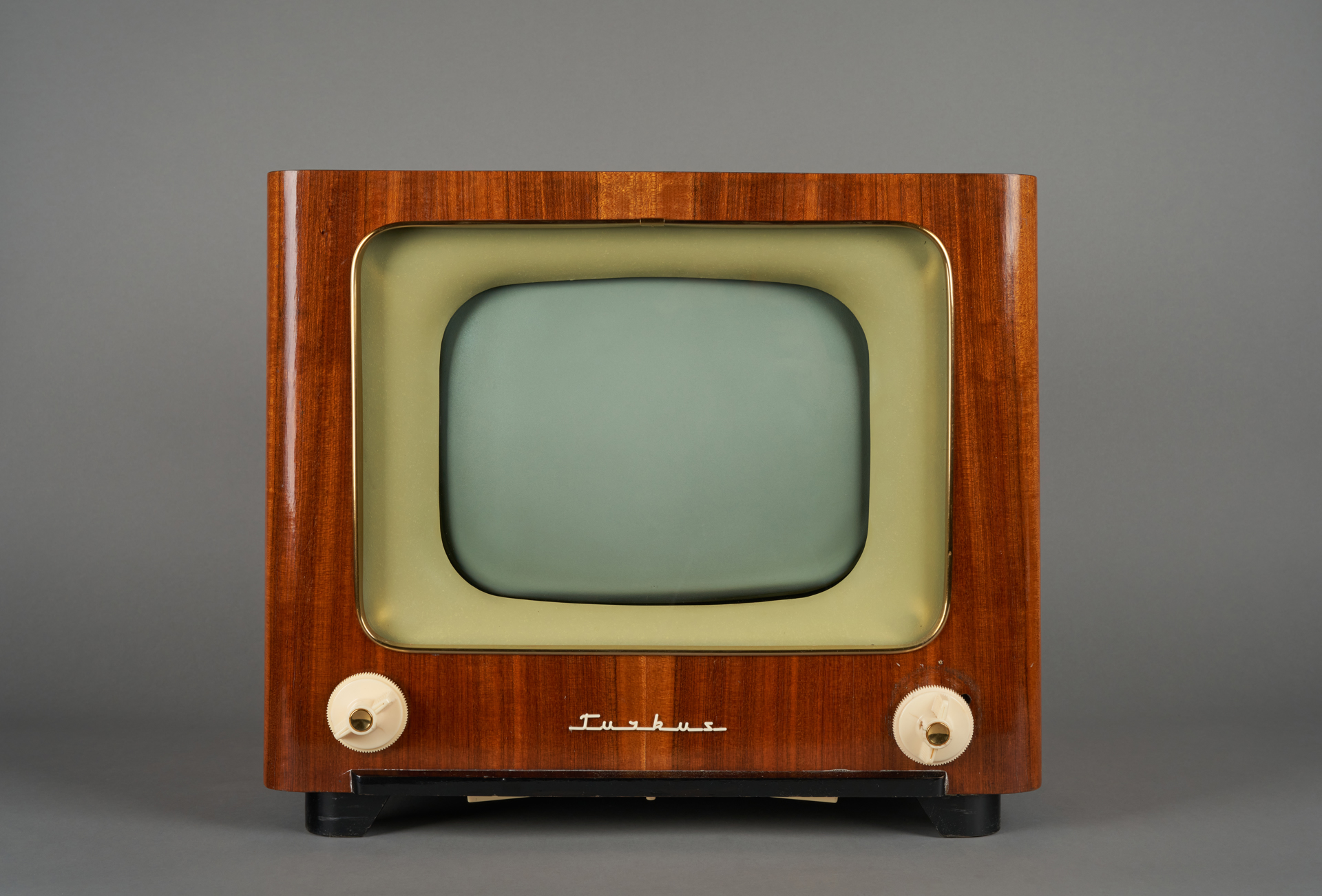
Turkus OT 149 television receiver
Warszawskie Zakłady Telewizyjne, / 1960Creator
Warszawskie Zakłady Telewizyjne
Time and place of creation
Time:
1960
Place:
Poland
The item presented here is the Turkus television receiver. It is a mains-powered, twelve-channel superheterodyne with a black-and-white CRT and diversified audio reception methods. The design of the Turkus OT-1491 model was based on components used in the Belweder TV set, also designed by the Warszawskie Zakłady Telewizyjne (WZT). The housings of both models exhibit visual similarity, but the Turkus differs in not having a front flap for controls. Instead, the controls are placed at the front, underneath the device. Two knobs are placed on either side of the front wall – the power and volume knob, and the channel change and tuning control. The receiver design was prepared by the Studies and Designs Bureau of the WZT. Television receivers from the West were used as models in designing the receiver. The Turkus was manufactured in 1959-1960 by the Warszawskie Zakłady Telewizyjne, Poland’s largest enterprise producing TV sets. It is equipped with a colour filter, providing the impression of a colour image when placed in front of the screen. The illusion of watching colour television was only achieved for landscapes displayed on the screen, because the upper part of the filter was dominated by the blue colour imitating the sky, and the bottom part was intended to resemble grass. Between them, is an area of orange-like colour. The first colour television broadcast (from the session of the sixth Congress of the Polish Communist Party) was not made in Poland until December 6, 1971. Based on the electrical system of the Turkus, the WZT also produced the Jantar and Szmaragd television sets, which differed in the CRT used and the housing design.
Authors: Piotr Turowski, Filip Wróblewski
Turkus OT 149 television receiver
Warszawskie Zakłady Telewizyjne, / 1960Creator
Warszawskie Zakłady Telewizyjne
Time and place of creation
Time:
1960
Place:
Poland











